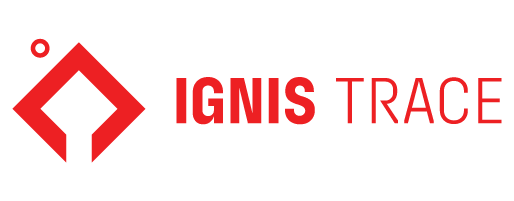Mineral Insulated Heating Cables

In industrial environments where extreme temperatures, chemical exposure, and operational reliability are critical, heating systems must meet the highest standards. One of the most effective solutions is the mineral insulated heater cable, known for its high temperature resistance and mechanical durability. These systems are widely used in oil refineries, chemical plants, food processing, and power generation facilities. A mineral heating cable ensures precise heat control while remaining highly resistant to environmental hazards.
Built with magnesium oxide insulation and metal sheathing, a mineral insulated heater cable provides both electrical insulation and optimal thermal conductivity. Unlike polymer-based cables, a mineral heater cable can operate safely in hazardous areas without degradation. Thanks to its long circuit lengths, stable heat output, and durable construction, it is considered an ideal solution for both freeze protection and process temperature maintenance. Moreover, mineral insulated heater cable prices offer long-term value through minimal maintenance and long service life. In this article, we’ll explore the key technical features, applications, installation steps, and the advantages of using mineral insulated heater cable systems in industrial settings.
What is Mineral Insulated Series Resistive Cable?
A mineral insulated series resistive cable is a specialized type of electric heating cable designed for harsh environments where standard polymer-insulated cables would fail. These cables use a metal sheath, usually stainless steel or Inconel, combined with tightly packed magnesium oxide powder as insulation. This unique construction provides excellent thermal conductivity and electrical insulation. Inside the cable, a resistance wire—commonly made from nickel-chromium alloy—generates heat when energized by electrical current. The heat is then evenly distributed along the cable’s length, making it ideal for consistent, controlled heating.
The mineral insulated heater cable can withstand extremely high temperatures, often exceeding 600°C, without losing performance. Its flame-retardant and non-corrosive structure allows it to operate safely in flammable or chemically aggressive environments. Unlike self-regulating heating cables, this cable provides a constant watt output, ensuring uniform heating across the entire circuit. It is often used for maintaining process temperatures, freeze protection, and heat tracing applications in critical systems. These cables are also favored in industries requiring minimal maintenance and long-term durability. Thanks to their robust design, they offer exceptional reliability even in the most demanding industrial settings.
How Does Mineral Insulated Series Resistive Cable Work?
A mineral heater cable operates through resistive heating. Electrical current passes through a resistance wire at its core, generating heat as a result of the electrical resistance. This heat radiates outward through the compacted magnesium oxide insulation and is then transferred to the surrounding environment. The cable’s metallic sheath not only protects the inner components but also helps conduct heat efficiently. It delivers a constant wattage, ensuring uniform heating along its entire length. Since the resistance is evenly distributed, there are no hot spots or performance drops. The cable must be properly sized based on voltage, resistance, and desired output. It is compatible with thermal sensors and control systems for accurate regulation. Designed to function in extreme temperatures, it can run continuously without deterioration. The simplicity and precision of its working principle make it ideal for critical industrial applications.
Mineral Insulated Series Resistive Cable Technical Specifications
The technical structure of a mineral insulated heater cable is what sets it apart from conventional heating solutions. At its core, the cable features a resistance wire—commonly made of nickel-chromium alloy—selected for its stability at high temperatures. This wire is surrounded by compacted magnesium oxide, a high-purity insulating material known for excellent dielectric strength and thermal conductivity. The entire assembly is encased in a metal sheath, typically stainless steel, copper-nickel, or Inconel, depending on environmental conditions. This design ensures mechanical protection, chemical resistance, and optimal thermal transfer. These cables are engineered to operate in temperatures up to 600°C or higher for continuous use.
The voltage ratings for mineral insulated cables typically range from 300V to 1000V, with power outputs customized according to the application. They offer extremely low capacitance and high insulation resistance. These features make them suitable for long circuit lengths without performance degradation. The cables are available in various diameters and resistances per meter, allowing for precise system design. They are also flame-retardant, halogen-free, and non-aging, ensuring long service life with minimal maintenance. Due to their solid construction, these cables are waterproof, crush-resistant, and immune to UV radiation and corrosion. The result is a heating solution that meets demanding safety and performance standards across multiple industries.
Mineral Insulated Series Resistive Cable Uses
The mineral insulated heater cable is widely used in industrial environments that demand high thermal stability and operational safety. One of its most common applications is in freeze protection for water, oil, and chemical pipelines exposed to sub-zero temperatures. These cables maintain the temperature of fluids by compensating for heat losses, preventing freezing or viscosity changes. They are also used in process temperature maintenance, particularly in industries such as oil and gas, pharmaceuticals, and food processing. Tanks, vessels, and silos often rely on these cables to ensure product quality by stabilizing temperature. Their ability to function in hazardous environments makes them ideal for use in ATEX and IECEx zones.
Beyond process industries, these cables are installed in infrastructure projects for snow melting and frost protection on ramps, roofs, and stairs. Airports and transportation hubs use them to prevent icing on runways and critical outdoor systems. Power plants utilize them in steam lines and heat tracing of fluid systems to prevent operational delays during cold seasons. In the marine sector, they help protect onboard fluid systems from freezing. Even in nuclear and defense applications, their performance and fire resistance make them a trusted solution. Because of their durability and constant wattage output, they are a long-term investment in any mission-critical system.
Mineral Insulated Series Resistive Cable Assembly and Installation Process
Installing a mineral heating cable requires precision and adherence to technical guidelines to ensure safety and efficiency. The first step involves assessing the surface or pipeline to be heated—considering factors such as ambient temperature, insulation type, and exposure to chemicals or moisture. After determining the required watt density and voltage, the correct cable type and length are selected. The cable must be laid out carefully, avoiding tight bends and mechanical strain. It should be secured to the pipe or surface using stainless steel tie wraps or approved attachment methods. Thermal insulation is then applied over the cable to minimize heat loss.
End terminations and cold lead connections must be sealed using compatible connection kits to maintain the system's integrity. Proper grounding is critical for safety, especially in conductive or hazardous environments. Temperature controllers, sensors, or thermostats are added for regulated heating. Before energizing the system, insulation resistance tests and continuity checks are performed. Documentation and labeling should match project specifications. Installers should follow all local electrical codes and safety protocols. A well-installed system will operate reliably for decades with minimal maintenance, delivering consistent heat output even under the most extreme conditions.
How to Calculate the Length of Mineral Insulated Series Resistive Cable?
Calculating the correct length of a mineral insulated series resistive cable requires a precise understanding of the system's thermal and electrical requirements. Start by determining the total heat loss from the surface or pipe to be heated, based on ambient temperature, insulation thickness, and surface area. Next, define the wattage per meter needed to offset that heat loss. Using the cable’s resistance per meter, you can calculate the required length using Ohm’s Law. Also factor in the power supply voltage and the total wattage needed for the system. Extra length may be required for fittings, valves, or complex pipe routes. The layout—whether straight or spiral—affects total cable length. Overestimating can lead to overheating; underestimating results in insufficient heat. Always validate your calculations with design software or engineering tools. Getting the length right is essential not only for performance but also for controlling mineral insulated heater cable prices, as material overuse can significantly increase costs.
Compatible Accessories for Mineral Insulated Series Resistance Cable
A complete mineral insulated heater cable system relies on several essential accessories to ensure reliable performance and long-term safety. End seal kits are required to properly terminate and seal the cable against moisture and contamination. Cold lead connection kits allow safe transitions from heated zones to power supplies. Junction boxes, often rated IP66 or higher, protect electrical connections from environmental hazards. Temperature controllers, including mechanical thermostats or digital PID controllers, regulate heat output. Thermal sensors such as RTDs or thermocouples are integrated for real-time monitoring. Mounting accessories like stainless steel straps or clips ensure secure and even cable placement. Weatherproof nameplates provide clear identification for maintenance. For more complex installations, explosion-proof glands or conduit fittings may be necessary. Cable glands maintain ingress protection and strain relief. Using compatible, high-quality accessories is vital to preserve system integrity and meet the design standards of any industrial heating application.
Advantages of Using Mineral Insulated Series Resistance Cable
A mineral heater cable provides numerous advantages over conventional heating systems, especially in challenging industrial environments. Its construction—featuring magnesium oxide insulation and a metallic sheath—offers unmatched resistance to high temperatures, chemicals, and mechanical stress. This makes it ideal for use in refineries, power plants, and hazardous locations. One of the biggest advantages is the cable’s ability to deliver a constant wattage, ensuring uniform heat output across the entire system. This helps maintain precise temperature control, which is critical for process efficiency. The cable is non-aging, non-combustible, and halogen-free, offering a high level of safety and reliability.
Another key advantage is its long operational life with minimal maintenance requirements. Unlike polymer-insulated alternatives, the mineral heater cable can function for decades under continuous use without degradation. It is also waterproof, UV-resistant, and immune to corrosion, making it suitable for both indoor and outdoor installations. Because of its solid-state construction, it can be installed in tight spaces and harsh environments without risk of failure. Additionally, its compatibility with modern temperature control systems allows seamless integration into automated industrial processes. From energy efficiency to safety compliance, the benefits of this cable make it a top choice for critical heating applications.
How to Install Mineral Insulated Series Resistance Cable Heating Cables
Installing a mineral insulated heater cable requires a methodical approach and compliance with safety standards. Before starting, calculate the required heat output based on environmental conditions, pipe dimensions, and insulation properties. Choose the appropriate cable length and resistance rating based on the project’s voltage and wattage requirements. Prepare the installation surface by cleaning the pipe or structure, then lay the cable in a straight, spiral, or looped configuration as needed. Ensure bend radii meet manufacturer guidelines to avoid damaging the cable. Secure the cable using stainless steel ties or approved fasteners to prevent movement or abrasion.
Once installed, apply thermal insulation over the cable to retain heat and improve efficiency. Make all electrical terminations using certified cold lead and end seal kits to ensure moisture protection and grounding integrity. Install thermostats and sensors in strategic locations for effective temperature monitoring and control. Perform insulation resistance and continuity tests before energizing the system. Clearly label the cable and components for future maintenance. All installation work should comply with local codes, especially in hazardous or classified zones. When installed properly, the system provides stable, long-term heat with minimal intervention.
Mineral Insulated Series Resistance Heating Cable Applications
 The mineral insulated heater cable is used in a wide range of industrial, commercial, and infrastructure applications where conventional heating methods are inadequate. In the oil and gas industry, it plays a critical role in freeze protection and process temperature maintenance for pipelines, valves, and vessels. Chemical processing plants use it to maintain consistent temperatures for reactive substances during storage and transport. In power plants, it helps prevent fluid lines from freezing during cold shutdowns or startup phases. Food and pharmaceutical manufacturing facilities utilize it to maintain hygiene-compliant temperatures in processing systems. Its fire-resistant nature also makes it suitable for emergency and life-safety systems.
The mineral insulated heater cable is used in a wide range of industrial, commercial, and infrastructure applications where conventional heating methods are inadequate. In the oil and gas industry, it plays a critical role in freeze protection and process temperature maintenance for pipelines, valves, and vessels. Chemical processing plants use it to maintain consistent temperatures for reactive substances during storage and transport. In power plants, it helps prevent fluid lines from freezing during cold shutdowns or startup phases. Food and pharmaceutical manufacturing facilities utilize it to maintain hygiene-compliant temperatures in processing systems. Its fire-resistant nature also makes it suitable for emergency and life-safety systems.
Beyond heavy industry, mineral insulated heating cables are applied in infrastructure such as ramps, bridges, and loading docks to prevent ice and snow accumulation. Airports rely on them for runway heating and aircraft de-icing systems. Data centers and telecom facilities use them in climate-sensitive environments to ensure uninterrupted service. Marine vessels apply these cables to protect onboard piping systems from freezing in cold climates. Even in nuclear and defense sectors, these cables are chosen for their unmatched reliability under extreme conditions. Their versatility and robustness make them a preferred choice across sectors where performance and safety are non-negotiable.
Get Technical Support and Quotation for Mineral Insulated Series Resistance Cable
Choosing the right mineral insulated heating system begins with expert guidance. Whether you're working on a new project or upgrading an existing one, technical support is essential to ensure correct design, material selection, and system integration. Our engineering team offers full assistance—from needs analysis to detailed cable layout planning. We evaluate environmental conditions, watt density requirements, voltage levels, and safety regulations to recommend the most effective cable type. Custom solutions are available to match specific applications across industries. You’ll also receive detailed drawings, installation guidelines, and operational support for long-term reliability.
When requesting a quotation, our team considers every variable: cable type, length, sheath material, power rating, and control components. This comprehensive approach ensures both cost-effectiveness and technical suitability. We prioritize transparency, so all components are clearly itemized for accuracy. By optimizing your system from the start, you not only improve performance but also manage mineral insulated heater cable prices more effectively. Our pricing reflects long-term value, factoring in lifespan, energy efficiency, and reduced maintenance costs. Contact our technical department today for a custom consultation and quotation tailored to your project’s specific needs.

 Türkçe
Türkçe
